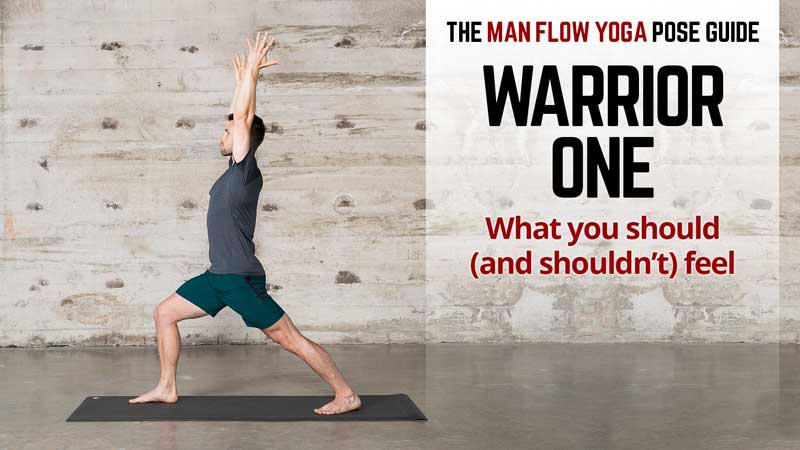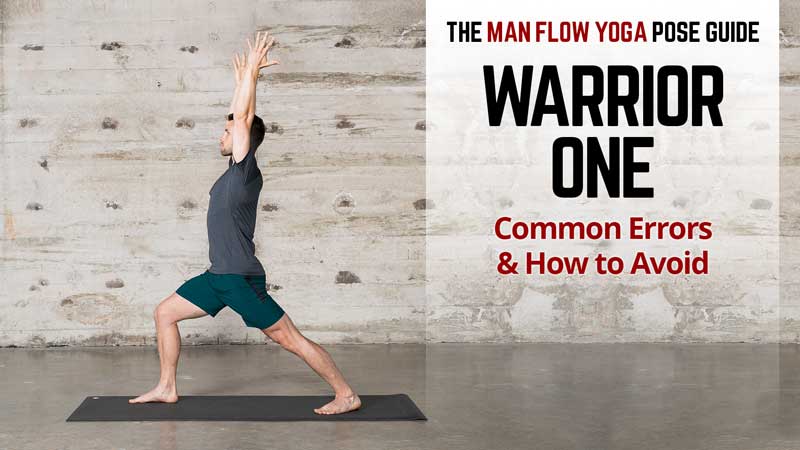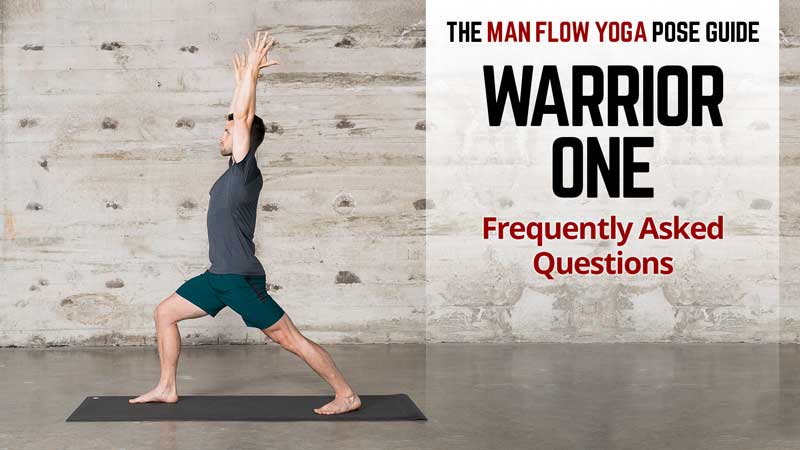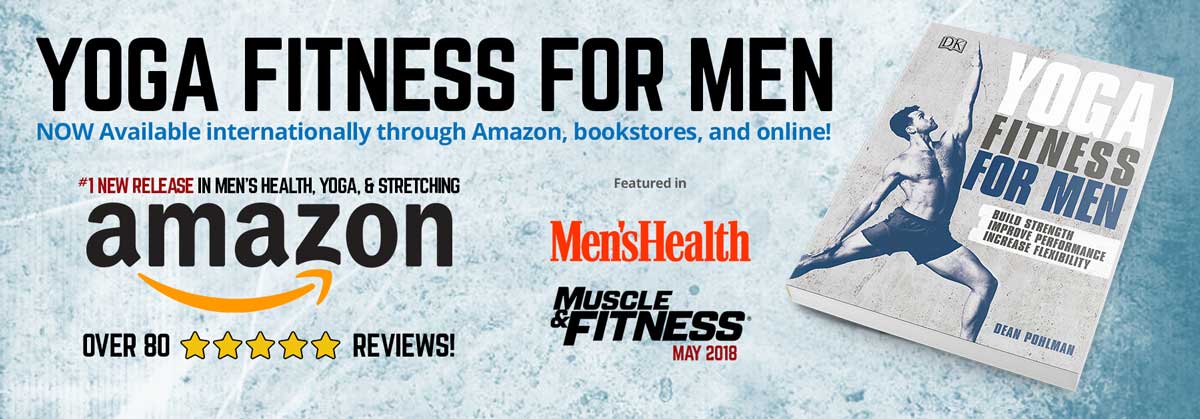Warrior 1 is a lunge variation that adds a calf and ankle mobilizing element. It is very effective at improving overall hip mobility, building hip strength, and improving ankle mobility. This makes it great for athletes, especially runners, and anyone who needs to improve lower-body mobility.
Target Area: Groin, Ankles, Hips
Difficulty: Beginner
Benefits:
- Improves hip mobility and inner thigh strength
- Reduces risk of ankle and Achilles tendon injury
- Strengthens knees
- Reduces lower-back strain
Considerations – who should be careful?
- If your lower body is currently injured (knee inflammation, hip flexor tear, foot injury, etc), then I would avoid this posture.
Technique Walkthrough
- From a standing position, take a medium step back with your left foot and place it 4 to 6in (10–15cm) outside your right foot (instead of in a straight line from heel to heel). Point your left foot out at 45 degrees.
- Straighten legs, and square hips to your right leg.
- Bend your right knee until your shin is perpendicular to the floor.
- Keep hips directly under your torso.
- Squeeze legs toward each other to engage inner thighs,hips, and core.
- Firmly press through both feet.
- Keep the back knee locked out.
- Lift your arms overhead so your biceps face your ears and palms face each other.
- Hold the posture, inhaling as you lengthen and get taller, and exhaling as you sink deeper into the lunge.
- Repeat on the other side.
- Your feet should be aligned as on two parallel lines, rather than as on a single balance beam. Turn your back foot outward, and square hips forward.
Modifications
- Bring your legs closer together.
- Arms at goalpost arms instead of straight overhead.
- Stretch in groin, ankle, and calf
- Engagement of inner thighs
- Engagement of core and the glute of the front leg
- Pinch in lower back; if you do, reach tailbone down, and bring feet closer together
- Your feet should be aligned as on two parallel lines, rather than as on a single
balance beam. Turn your back foot outward, and square hips forward.
- Your feet should be aligned as on two parallel lines, rather than as on a single
- Back heel lifting off floor; if it is, press it down, and if you can’t do that, bring feet closer
- Chest further forward than your hips; keep your shoulders directly above your hips.
- Arching through your back, which compensates for lack of hip and/or shoulder mobility. Make sure your ribs are drawn in.
- Not pressing down through your back heel. Make sure you are. Can also lift the toes.
- Knee bent past the ankle in front leg; make sure shin stays perpendicular to the ground.
- Weight in the front knee, not in the hips and core; keep knee over ankle in front foot, keep hips centered under shoulders.
- What if I’m not feeling a stretch?
This is usually caused by lack of core activation, arching through your back, or not going deep enough into the posture. - How can I get deeper into Warrior 1?
You can work on actively engaging the hamstring in your front leg. Use your heel to pull your hips further forward. It also just takes time for your hip flexibility to develop – work on your active mobility to get there faster.
What you should (and shouldn’t) be feeling.
What should you be feeling?
Pro Tip: To square your hips as much as possible, firmly push the front hip toward the floor, and narrow your stance as needed. You may not get them perfectly square, but keep practicing. Focus on feeling the correct stretches in your lower body and making your spine neutral.
What you shouldn’t feel.
Common Errors & How to Avoid.
FAQs
Want to see more info like this? These photos and sections are taken from Yoga Fitness for Men, published in May 2018 by DK Publishers, and written by Dean Pohlman (that’s me), the founder of Man Flow Yoga.






